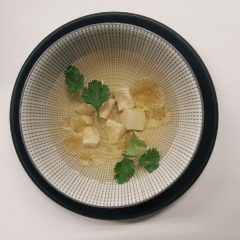
Stay Warm like a Korean Buddhist
On one hand, I’m not a classically trained chef. On the other hand, being nerdy comes pretty naturally for me, so I get inspired and research a lot. That the research requires lots of eating, exploring and reading just makes it that much more of a joy. One of the major inspirations for Miss […]
Read more »
Zingerman’s Art for Sale